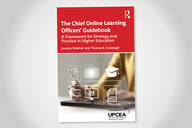You have /5 articles left.
Sign up for a free account or log in.
A decade or more ago, the Australian government decided that international higher education could become a major income producer for the nation. The higher education sector was motivated to make money from international education by government budget cuts — revenue to be made up by entrepreneurial international activity. The essential goal of internationalization was moneymaking.
The higher education sector responded energetically with a wide range of initiatives. International student enrolments at Australian universities expanded rapidly with those students contributing high tuition fees. Universities also developed a variety of overseas strategies, including branch campuses (in Vietnam, South Africa, Singapore, and elsewhere), twinning arrangements with educational institutions and business enterprises of various kinds in Malaysia and elsewhere, and others.
The government cooperated by providing some funding for international outreach, and most important, by easing visa and other immigration regulations, thus making it easy for international students to study in Australia and for many of them to remain in the country and work after completing their degrees and certificates.
From a financial perspective, the policy was a huge success — educational services became one of Australia’s top exports. But from an academic viewpoint, problems soon entered the system. Overseas, questions were raised about the quality and ethics of Australian institutional transplants. South Africa wondered about Monash, for example. A few initiatives failed, such as the University of New South Wales in Singapore, costing the university millions when it withdrew after failing to attract enough students.
Bottom-feeders entered the market, as often happens when financial gain becomes the central motivator for international higher education. Small trade and vocational schools in fields such as hair design, attracted significant numbers of students from abroad, especially from South Asia, with promises of quick certificates and jobs thereafter. Students with, to say the least, marginal qualifications began to stream in. Then outbreaks of anti-South Asian prejudice started to surface in Melbourne and elsewhere, creasing a firestorm of criticism in India.
Additional problems arose. The Royal Melbourne Institute of Technology (RMIT), one of the country’s most active internationally universities, has actually been accused to encouraging students to cheat on examinations. Stories began to appear in the press about international students being awarded degrees despite showing up to exams drunk, international students allowed to stay in exam rooms for as long as they wish, and so on.
Current estimates are that international student numbers in Australia may fall by twenty percent with a concomitant decline in revenues. Australia’s enviable international academic image, its “brand”, has already been significantly damaged. All of this is an inevitable result of what happens when commercialism shapes international education. Australia’s example has important lessons for others!

